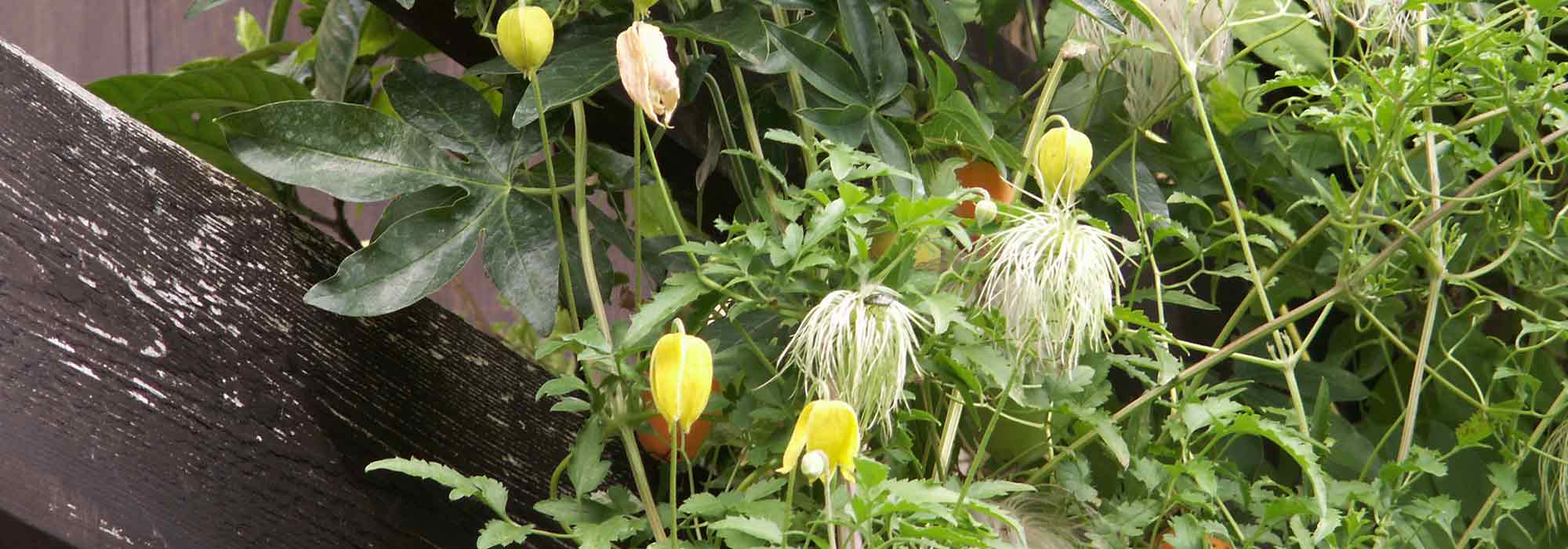
14 unusual fruits
Decorative fruits to discover
Contents
Gardens hold many surprises. Whether with trees, bushes, or perennial plants, discover fruiting varieties that will amaze you and add unique touches! In addition to foliage in various shades, bark, and diverse flowering, fruits also have their place in adding decorative notes and enlivening your green space.
Let’s explore together 14 plants that will astonish you with their exceptional fruiting!
Budgerigar herb
Hardy perennial, Asclepias syriaca, also known as milkweed, is native to North America. Throughout the summer, it bears pink flowers with hints of vanilla and honey, which give way to spectacular fruits. Spiny and pale green, they resemble parakeets. Once perched on the edge of a glass, one might think of parakeets drinking.
When winter arrives, the fruits release seeds (achenes) with a soft texture. However, be cautious when handling the plant as it secretes a toxic latex that can irritate the skin, and it can become invasive due to its running rootstocks.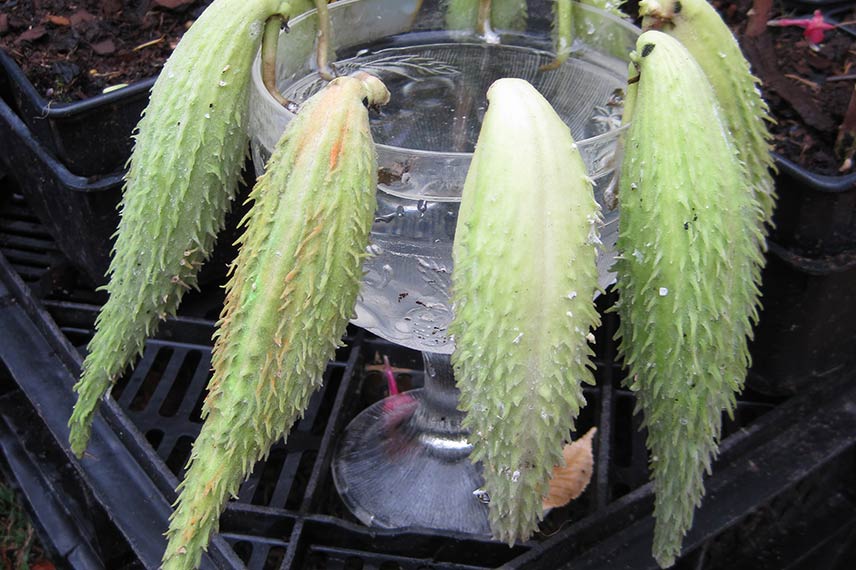 ion id=”attachment_109823″ align=”aligncenter” width=”856″] Once the peduncles are perched on the glass, the fruits of the asclepias add a touch of originality to the table!</caption]
ion id=”attachment_109823″ align=”aligncenter” width=”856″] Once the peduncles are perched on the glass, the fruits of the asclepias add a touch of originality to the table!</caption]
Read also
Spindle: which variety to choose?The candy bush
The Callicarpa bodinieri ‘Profusion’ is a highly decorative bush with its small, pearl-like, shiny purple fruits that provide such stunning splashes of colour during the winter dormancy period. With deciduous bronze-purple foliage in spring, dark green in summer that turns orange to purple in autumn, and its small fruits in winter, the Callicarpa charms many gardeners. Hardy, it thrives in all soils and prefers full sun exposure.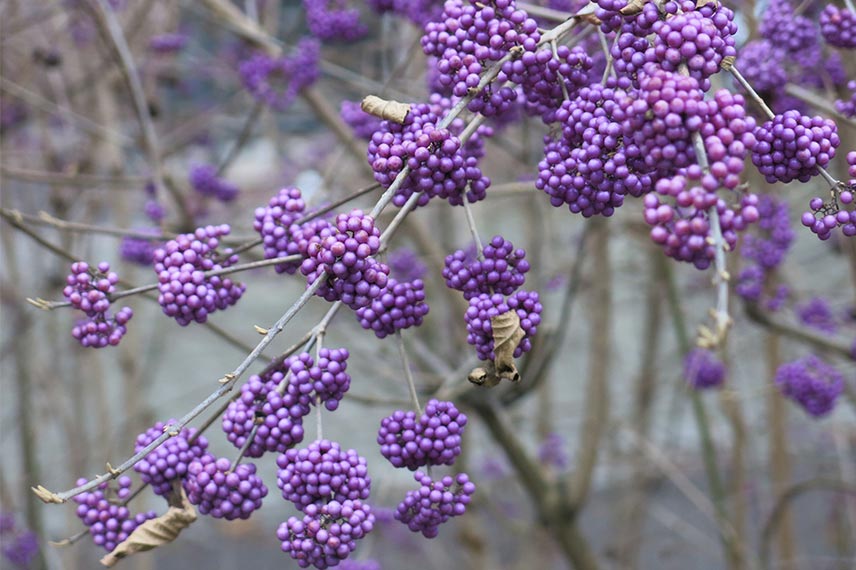 Discover this stunning purple colour in winter in your garden with the Callicarpa bodinieri ‘Profusion’
Discover this stunning purple colour in winter in your garden with the Callicarpa bodinieri ‘Profusion’
To learn more, check out our advice sheet titled Callicarpa: to plant, to grow, and to maintain.
Clematis
In this large family of climbing plants, you can discover unusual fruits with Clematis vitalba, also known as traveller’s joy or wood clematis, which is adorned from January to October with small, pale greenish flowers featuring a frizzy centre that release fragrances in the evening. After flowering comes the production of fruit (achenes) in the shape of balls, silky fruits covered in a silver down, known as virgin’s hair, which persists throughout winter.
You can also be tempted by Clematis tangutica with varieties such as ‘Aureolin’, ‘Golden Harvest’, or ‘Grace’ that bloom from July to September, varying in colour depending on the variety, but especially producing decorative fruits throughout winter. At the end of flowering, small, feathery, silver-grey fruits appear. Here are clematis with surprising decorative effects to dress up a wall, hedge, fence, or trellis.
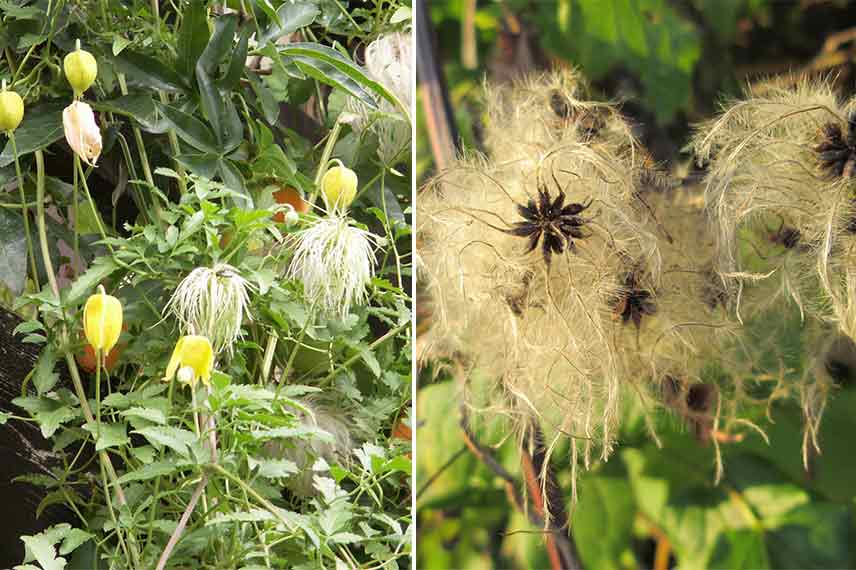
All winter, admire the fruiting of tangutica clematis (on the left) and vitalba
Read also
Clematis: which variety to choose?Harlequin Glorybower
Here is a bush native to Asia, highly decorative all year round. With its deciduous leaves appearing as early as April, its fragrant flowering throughout the summer, and its decorative fruits shaped like jewels all winter, Clerodendron trichotomum is a must-grow bush for your garden. Its small, slightly pinkish-white star-shaped flowers are highly fragrant, attracting butterflies and pollinators, and give way to a profusion of berries in an incredible turquoise colour, so rare in gardens, encased in a bright pink-red calyx—true little jewels! Whether isolated or in a bed of shrubs and perennials, the Clerodendron will showcase its many advantages.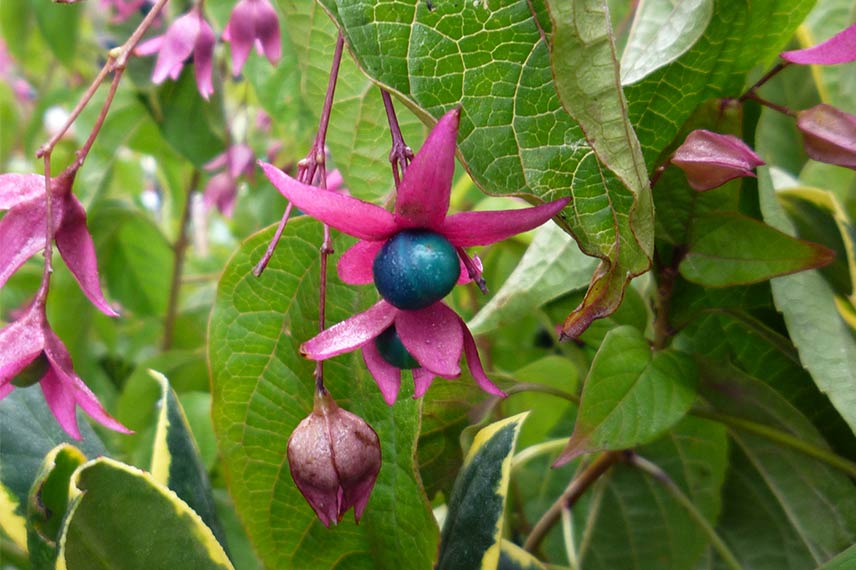 Dare to grow the Clerodendron for its astonishing turquoise fruits, surrounded by violet-pink calyces that punctuate the foliage[/caption>
Dare to grow the Clerodendron for its astonishing turquoise fruits, surrounded by violet-pink calyces that punctuate the foliage[/caption>
Learn all about the Clerodendron with our guide Clerodendron: planting, pruning, and care
Tamarisk
It is a deciduous bush that is very resistant to drought and cold, blooming in spring by producing clusters of papilionaceous flowers that are yellow maculate with brown from May to July. The originality of the Colutea arborescens lies in its surprising and decorative fruiting. Indeed, it produces translucent, swollen pods that change from greenish-yellow to brown-red at ripeness. Children often enjoy displaying the fruits just for fun.
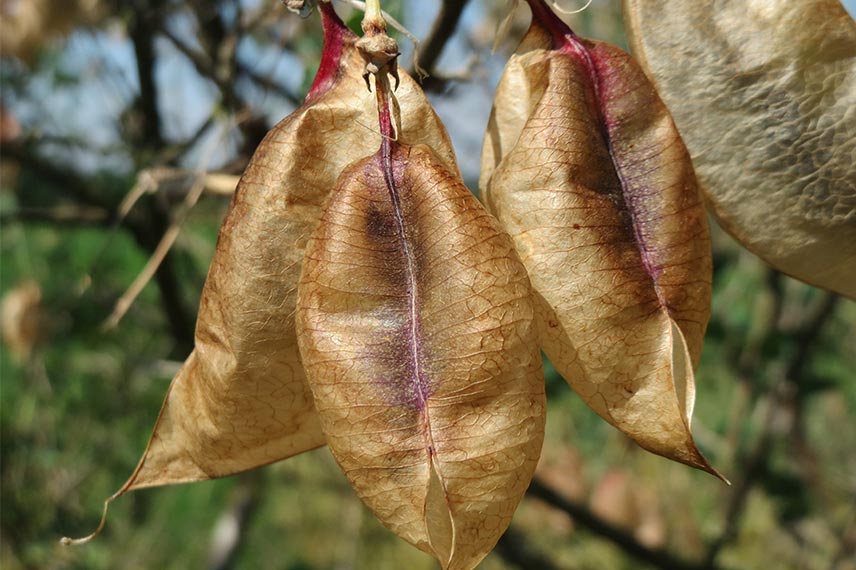
What a surprise to see these swollen fruits above our heads!
Cornus
These small shrubs native to Asia have plenty of advantages! The Cornus kousa, Japanese dogwood variety ‘Teutonia’, ‘Cappuccino’, or ‘Milky Way’, boast foliage in various shades of green or red that will turn bright red in autumn. In spring, they are adorned with star-shaped bracts in white, cream, or pink, which are very light. Come autumn, they produce very decorative fruits that resemble large, bright red strawberries. They are edible, although they do not have significant culinary appeal.
Another unusual fruiting feature among the Cornus is the white dogwood (Cornus alba), native to Siberia. After being covered in green foliage that turns red in autumn, it reveals beautifully tinted red bark that adds brightness to winter gardens. From May to the end of June, it bears small, highly melliferous white flowers, followed by an astonishing fruiting of small, translucent white berries that contain seeds which turn blue at ripeness.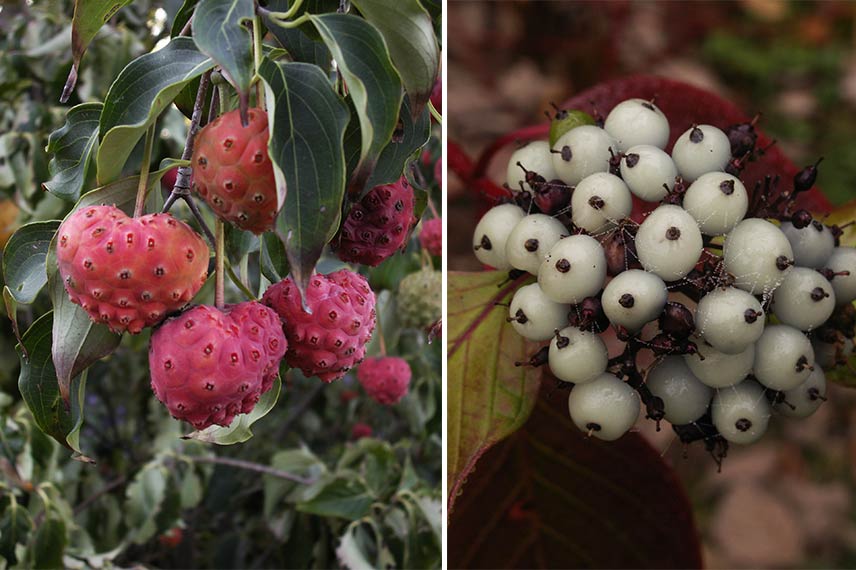 Amazing fruiting of Cornus kousa
Amazing fruiting of Cornus kousa
Discover our guide on Cornus kousa: choosing, planting, and caring for
Turkish hazel
Corylus colurna is a rather rare tree, not a bush, that can reach several metres in height, and its conical shape sets it apart from other hazels. The male aments that hang down and the discreet reddish female aments precede an unusual fruiting, different from that of classic hazels. The edible walnuts, which resemble large hazelnuts, are enclosed in much more irregular capsules than those of classic hazels and are surrounded by growths. They are very tasty but have a very hard shell, making them difficult to crack.
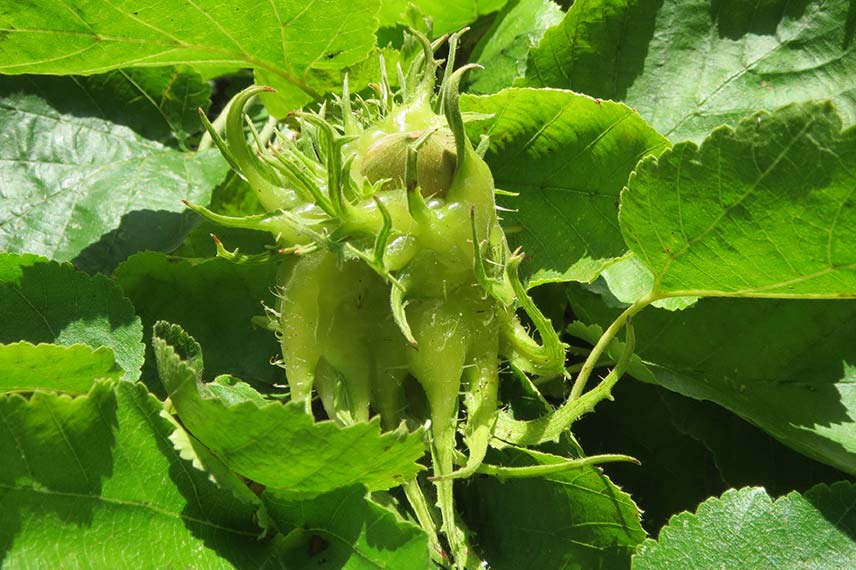
The irregularity of the capsules hides beautiful large edible walnuts
Here are some valuable tips for choosing the right hazel and our sheet on Hazel, Corylus: planting, pruning, and maintaining.
Decaisnea fargesii
You asked for unusual fruits? Discover this bush called Decaisnea, which bears clusters of cream-yellow flowers in spring. Then, large turquoise pods settle on the branches, remaining in place throughout autumn. Completely covered in astonishing fruits, this bush is primarily grown for its decorative appeal.
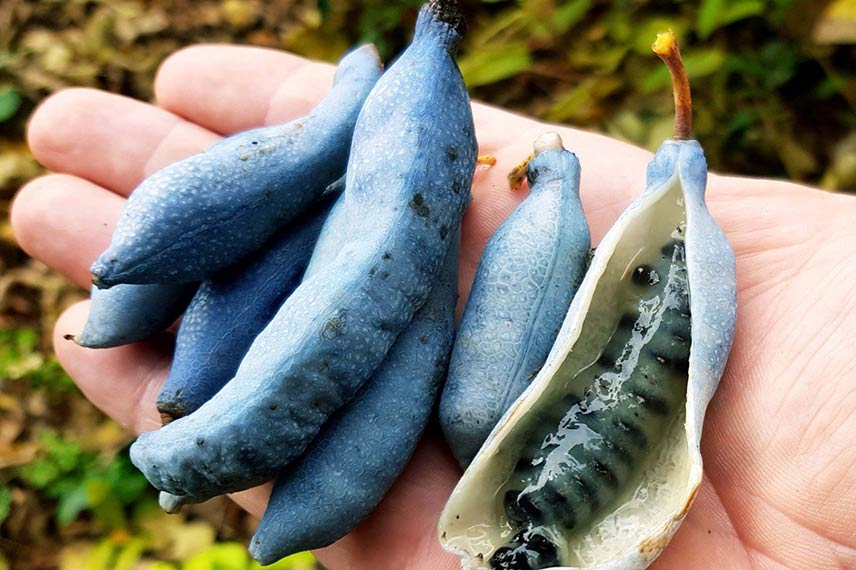
With the appearance of exotic fruits, grow Decaisnea fruits in your garden!
Common cotton grass
Eriophorum angustifolium is a perennial plant that thrives in wet environments. It produces tufts of linear leaves and throughout the summer, insignificant inflorescences yield grouped fruits in spikelets, positioned at the tips of fluffy stems, which are white in colour. These stems add a sense of lightness to the edges of ponds or water bodies.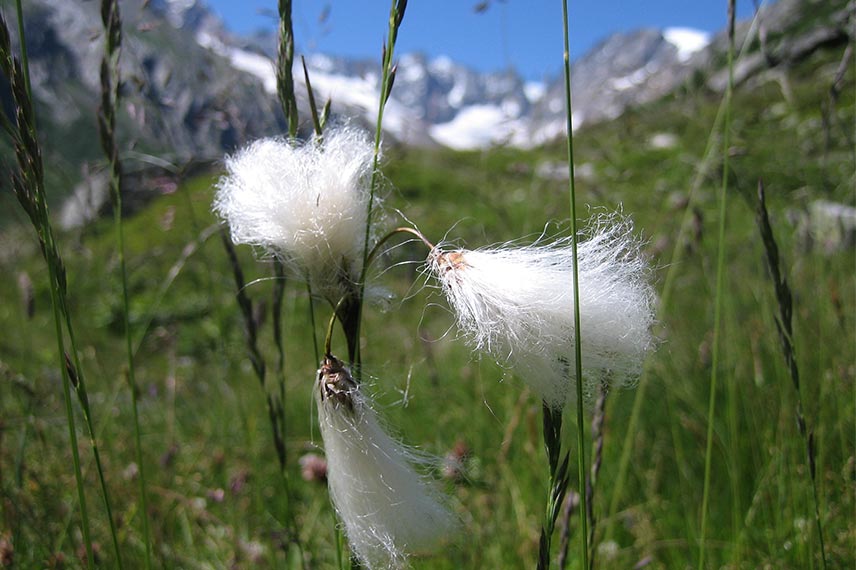 These lovely tufts that resemble cotton are truly unusual!
These lovely tufts that resemble cotton are truly unusual!
Wood avens
Also known as Geum urbanum, soldier’s herb or fever herb, this wild perennial has a long flowering period from June to September. It is often found in mountainous areas, along waterways, or in meadows. Its fluffy evergreen foliage contrasts with its small yellow flowers that bloom successively, giving way to small, round, hooked fruits. These tend to cling to the clothes of gardeners and animals. Another unique feature of this perennial, in addition to its hooked fruits, is the clove-scented rhizome. It is part of the medicinal plants with recognised properties.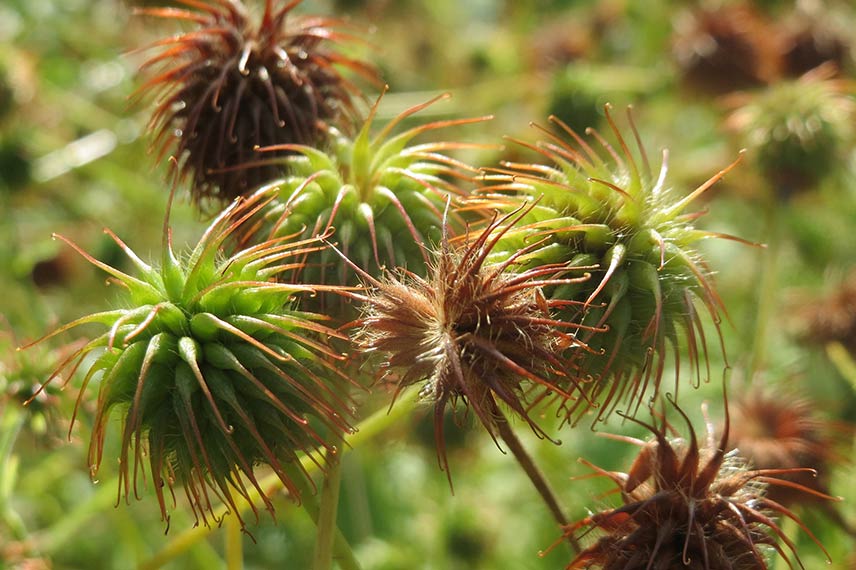 Beware of the fruits of this avens that easily cling to clothes
Beware of the fruits of this avens that easily cling to clothes
Discover this charming perennial with our article on Avens
Pride of India
This small tree, native to the Far East, has several qualities to charm you. The Koelreuteria paniculata has a modest height of 10 m. Its deciduous leaves, red in spring, turn grey-green in summer and then yellow in autumn. From July, highly fragrant yellow flowers cover the branches, attracting bees, followed by swollen fruits that take over. Like small lanterns hanging, these fruits, which vary in colour depending on their ripeness, contain oval black seeds.
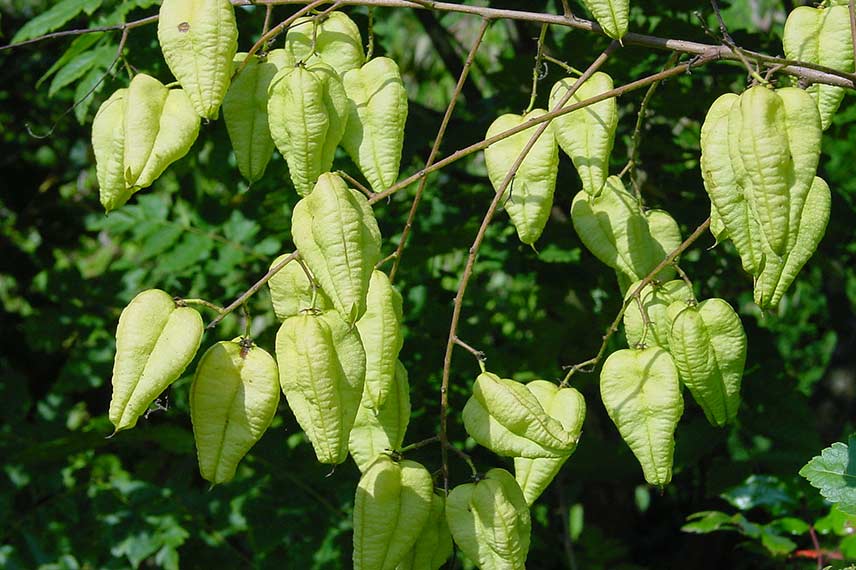
Small lanterns hanging from the soap tree
Follow all the advice with our sheet The soap tree: planting and care
Cape gooseberry
Here is a perennial plant cultivated for its astonishing fruits. From August to October, small tangy fruits of bright orange colour appear in greenish calyxes shaped like Chinese lanterns. The Physalis peruviana, native to South America, is very easy to grow, and its small fruits with a tangerine flavour are used for decorating pastries or in jam. The seeds contained within the fruit can reseed spontaneously.
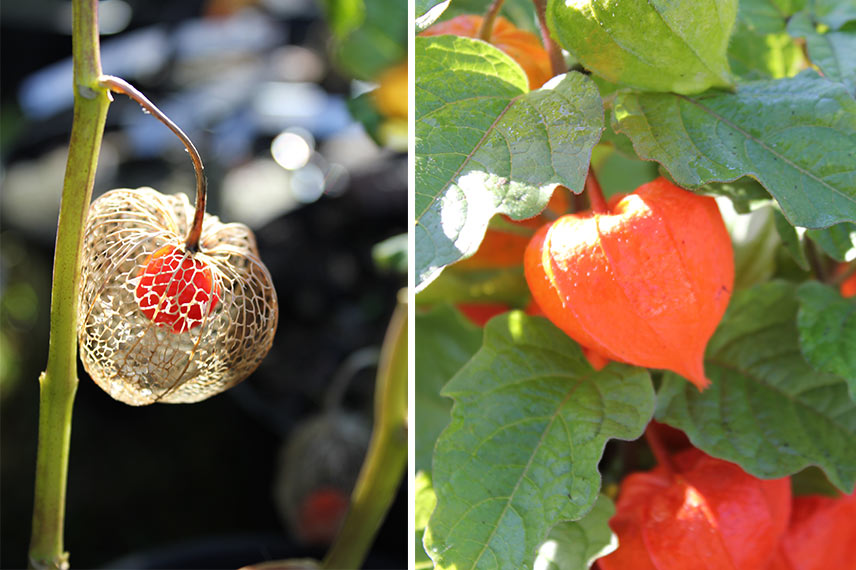
Chinese lanterns of Physalis peruviana
Pulsatilla anemone
Small perennial with fluffy foliage, Pulsatilla vulgaris bears flowers with petals covered in silvery hairs. Once the flowering is over, small fruits (achenes) in the shape of silky pom-poms form, making the stems of this pasque flower very decorative. You can find ‘Papageno’ with red flowers, ‘Alba’ with small white flowers, and ‘Rubra’, a deep red with a yellow centre. Mix the varieties in a rockery or a border with other perennial plants.
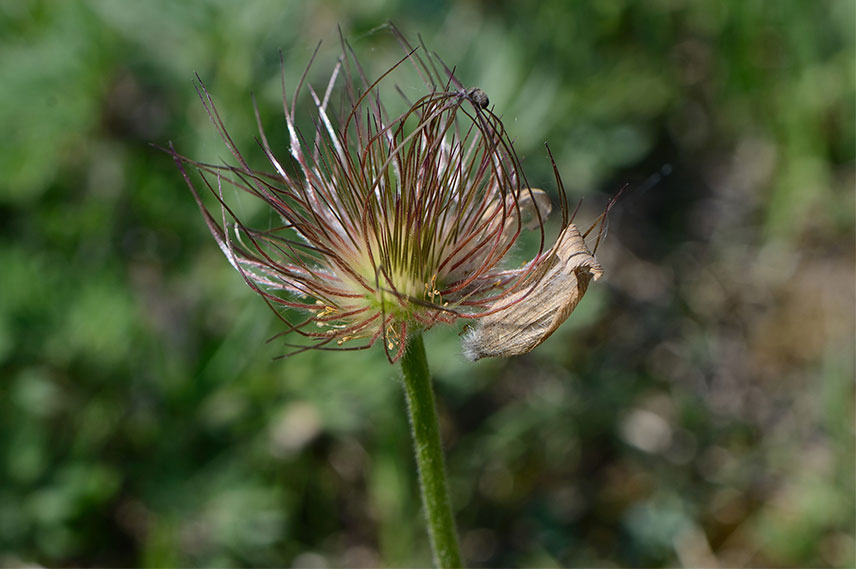
Fluffy fruiting of the pasque flower
Euonymus
Here are some ornamental bushes widely cultivated for their numerous advantages: the colour of their foliage, the presence of berries in various hues, and their ease of cultivation make them an essential bush. The choice of Euonymus is very broad, with shades and fruiting always surprising! Dare to try Euonymus americanus with its spiky pink-red capsule-shaped fruits encircling an orange berry, Euonymus grandiflorus ‘Red Wine’ with its small coral-pink pumpkin-shaped fruits, or even Euonymus clivicolus with its small winged cream-pink fruits turning fuchsia.
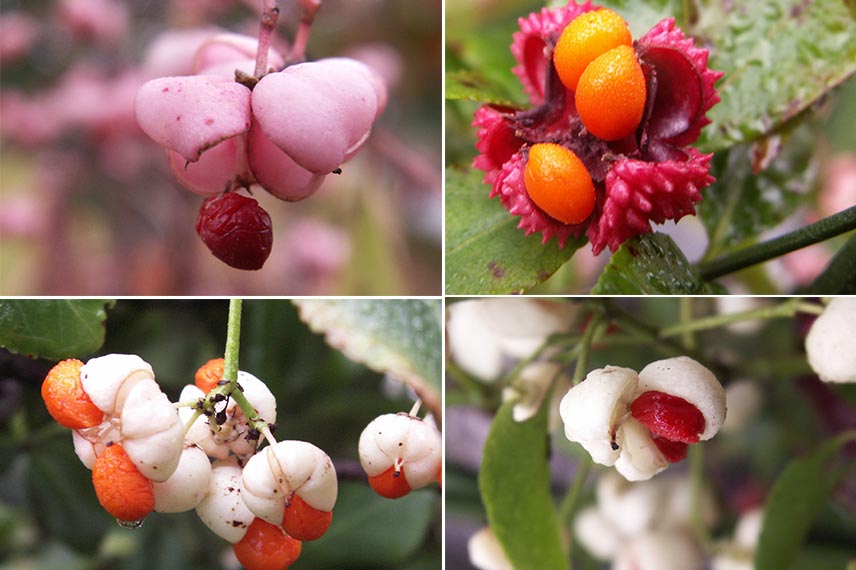
Euonymus bungeanus ‘Dart’s Pride’, americanus, fortunei ‘Emerald Cushion’ and hamiltonianus ‘Popcorn’
Here is our article to help you choose your spindle.
To continue the adventure of unusual fruiting, read the article The best ornamental bushes with decorative fruits or 6 roses with decorative fruits.
- Subscribe!
- Contents
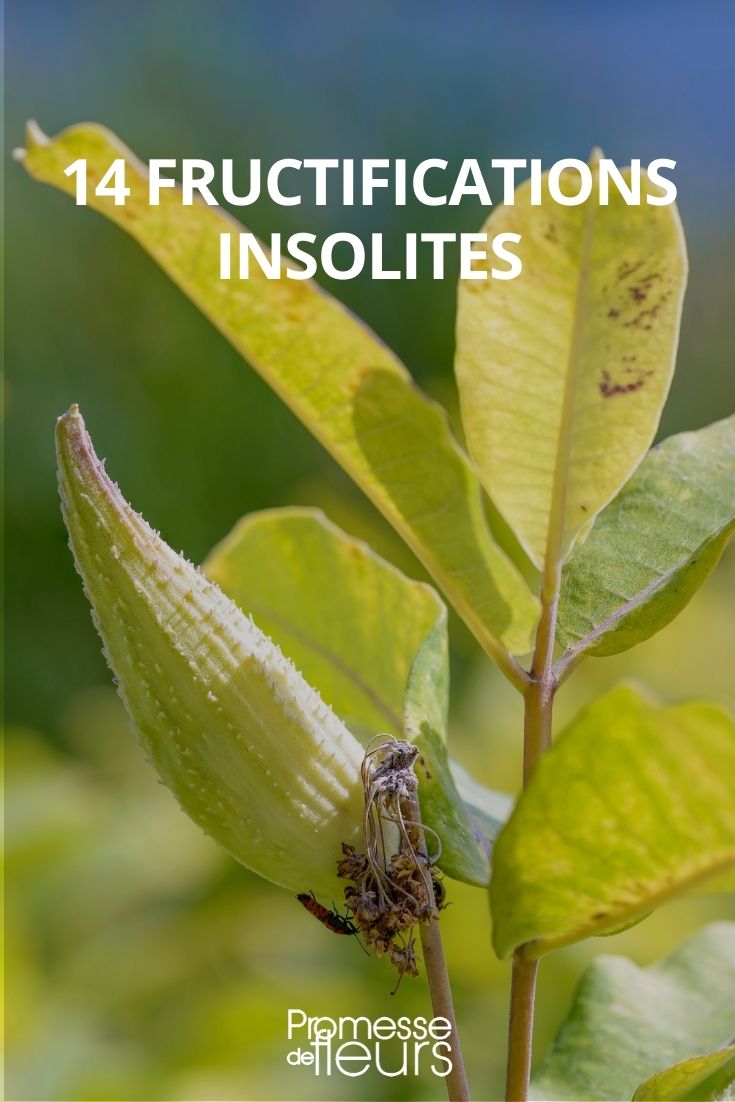































Comments